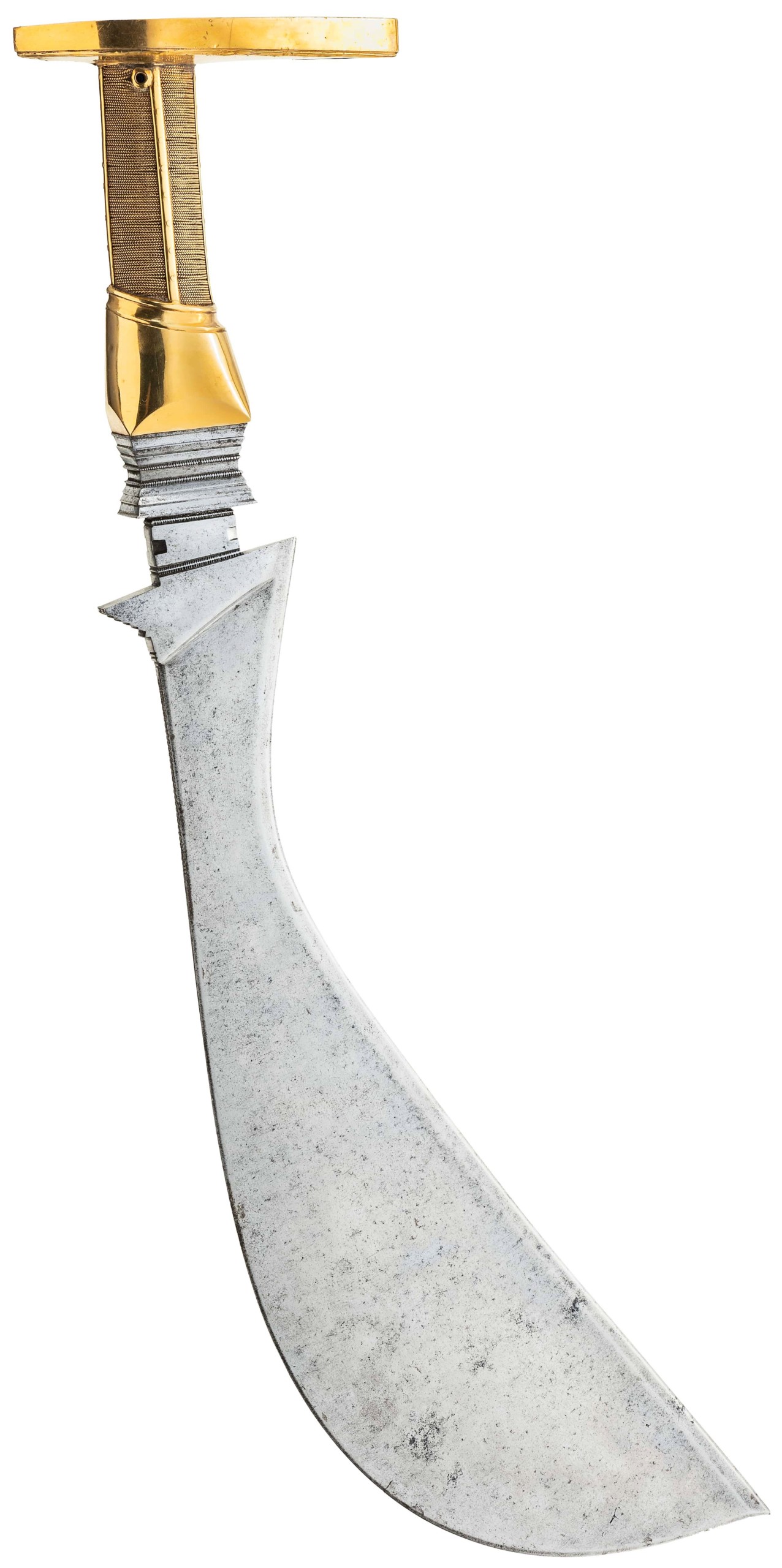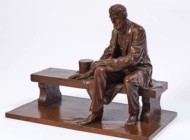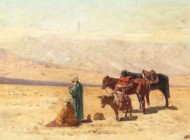
Leading the sale was this Indian Ayda Katti with 18K gold-mounted handle, 1815, nearly 2 feet long. It slashed its estimates and achieved $56,383 (€8/16,000).
Review by Carly Timpson
GRASBRUNN, GERMANY — Hermann Historica’s December 6 auction of the collection of Oded and Tsipora Shermister of Tel Aviv, Israel, featured 393 lots of antique weaponry amassed between the 1980s-90s. The catalog noted that the collection’s strongest assets were “Ottoman, Caucasian and Persian weapons as well as those from the Indian subcontinent. Along with weapons from Tibet, China and Japan, the collection also includes numerous rare artifacts from Burma, Indonesia, the Philippines and other regions of Southeast Asia.” The collection, according to Hermann Historica, was “compiled with enormous care and great expertise.”
Leading the sale was an Indian Ayda Katti. According to Oriental Arms, the “Ayda Katti is the traditional sword or agricultural tool of the Kodava people resides in what is today Karnataka state in southwest India.” With an 18K gold-mounted handle, the 1815 sword had a wide curved blade and measured nearly two feet in length.
The catalog described the blade as being wide and robust, noting that its sharp edge was on the concave side and that it had a “finely stepped bolster and gold-lined mark on the obverse.” Having a pear-shaped pommel that bore a circular stamp marked for “Ling Rajender Wadeer,” the sword slashed its €16,000 high estimate to achieve $56,383 (€54,390).

This Algerian silver-mounted miquelet rifle with coral cabochons, from the second half of the Eighteenth Century, 57 inches long, was shot down for $43,153, more than double its high estimate (€10/20,000).
Following in price at $43,153 (€41,440) was an Algerian silver-mounted miquelet rifle from the second half of the Eighteenth Century. According to the Metropolitan Museum of Art, “the miquelet is an early and sturdy form of flintlock popular throughout the Ottoman Empire from the Seventeenth into the early Twentieth Century.” This large rifle, measuring 57 inches in length, was finely mounted with silver and set with coral cabochons along its stock and had a few rectangular green stones on the lock plate. The catalog noted that this was a “rare luxury weapon from the Algerian court” and added, “during the Ottoman reign, western delegations received comparable weapons as official gifts from the Dey of Algier… such a rifle was given to President Thomas Jefferson during a state visit.”

Flying more than nine-times its high estimate was this Indian Moplah sword from the Malabar Coast, Nineteenth Century. The 22-inch-long sword had a bronze handle shaped to resemble a dragon’s head with inserted glass eyes; it was bid to $35,062 (€1,8/3,6,000).
With a dragon-form bronze handle, a Moplah sword from the Nineteenth Century swung to $35,062 (€33,670). The Moplah — according to Mandarin Mansion Antiques — “originates from the Malabar Coast in South India,” “was named after the Muslim communities of the same name” and is “characterized by having wide, forward curving blades with a concave edge.” Having an openwork ferrule with traditional Indian motifs, the octagonal bronze handle was further adorned with relief-carved details, all coming together with the dragon head, which had inset red glass eyes.

This gold-damascened Indian khanda with a wootz-Damascus blade, circa 1800, had an iron grip and velvet-covered wood scabbard and measured 31½ inches long; it went out for $28,320 (€3,5/7,000).
Known as a khanda, a double-edged straight sword from India brought $28,320 (€27,195). This example had a wootz-Damascus blade with a double-edged point and an iron grip incised with gold animal and floral motifs. The blade was detailed with openwork silver accents fitt ed at the top and along both edges of the blade. The catalog claimed the sword showed “exquisite workmanship,” and it was complete with its velvet-covered wooden scabbard similarly adorned with silver fittings.
Prices quoted include the buyer’s premium as reported by the auction house and have been converted to USD using the current exchange rate. For information, www.hermann-historica.de/en.




